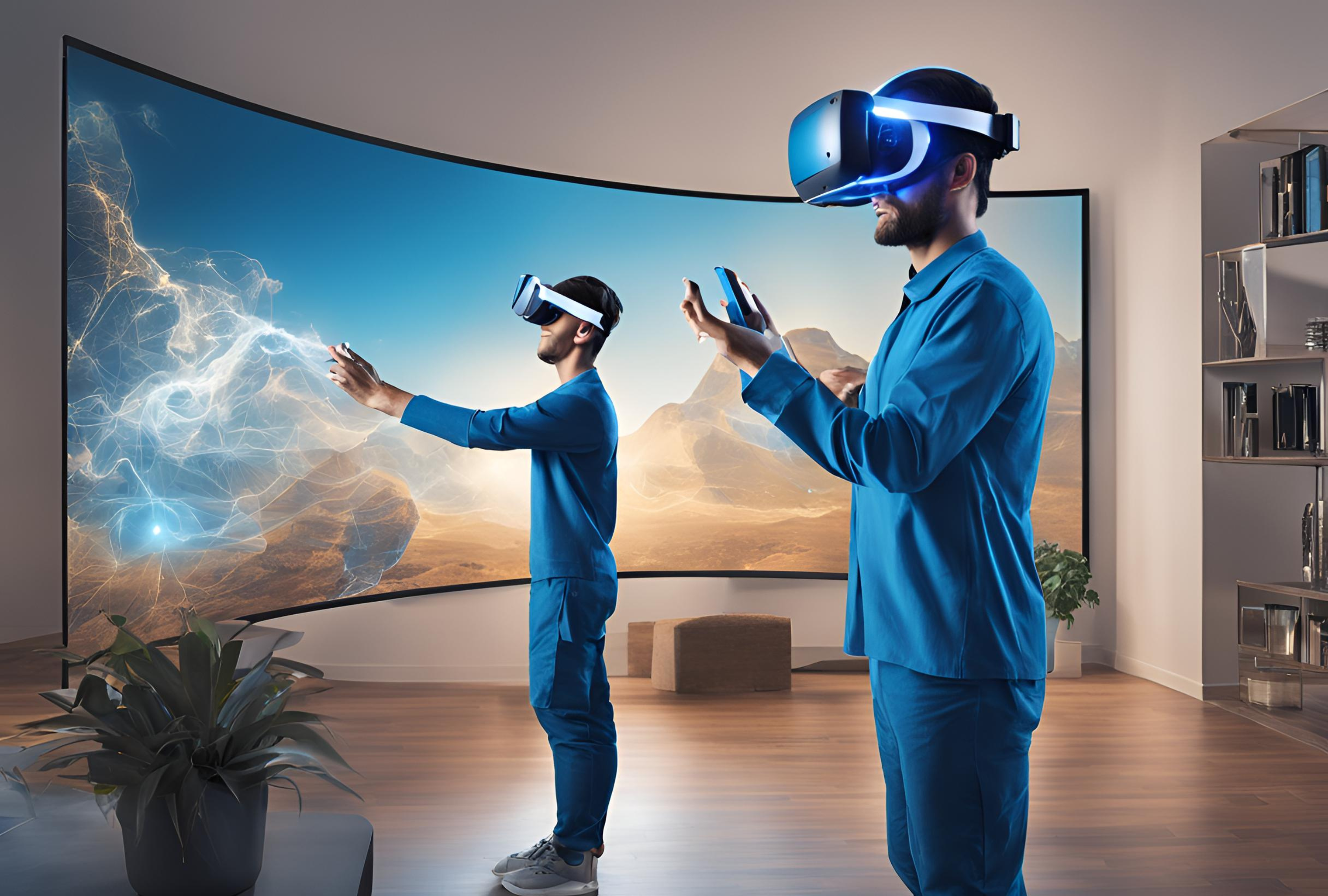Welcome to the future, where the lines between the real and the virtual are blurring faster than a buffering YouTube video on dial-up. Yes, I’m talking about Augmented Reality (AR) and Virtual Reality (VR). These tech marvels are not just the stuff of sci-fi anymore; they are making their way into our everyday lives, transforming how we work, learn, shop, and even take care of our health. Grab your VR headset (if you have one) and join me as we dive into how AR and VR are reshaping the IT landscape and the modern world.
AR and VR in Remote Work: Bridging the Gap
Remember the days when working from home was a luxury? Thanks to the pandemic, it’s now a necessity for many. But let’s face it, endless Zoom calls can be about as thrilling as watching paint dry. Enter AR and VR. These technologies are turning remote work into an immersive experience. Imagine having a virtual meeting where you can see your colleagues as 3D avatars, interact with virtual whiteboards, and even give high-fives (well, virtual ones). According to XR Today, companies are increasingly adopting VR for remote team collaboration, making it easier to work together as if everyone were in the same room, minus the coffee machine gossip.
AR and VR in Education: Learning Beyond the Textbook
If you thought dissecting a frog in biology class was the pinnacle of interactive learning, think again. AR and VR are turning classrooms into immersive learning environments. Students can now explore the human body in 3D, travel back in time to ancient civilizations, or even take a virtual field trip to Mars. This tech is making education more engaging and accessible, especially for complex subjects. ARPost highlights how VR simulations are being used to train medical students, offering them hands-on experience without the risk of killing a patient (phew!). And it’s not just higher education; even elementary students are benefiting from AR apps that make learning fun and interactive.
Virtual Reality Headsets: The Gateway to Another Dimension
Now, let’s talk gear. VR headsets are the magical portals that transport us into these alternate realities. From gaming to professional training, these devices are becoming more sophisticated and accessible. The Oculus Quest, HTC Vive, and PlayStation VR are just a few of the headsets that have become household names. According to UploadVR, the market for VR headsets is booming, with new models offering higher resolution, better motion tracking, and more immersive experiences. Whether you’re slaying dragons in a video game or attending a virtual concert, these headsets are your ticket to another dimension.
AR and VR in Healthcare: A New Age of Medicine
Healthcare is one field where AR and VR are making groundbreaking strides. Surgeons can now use AR to overlay critical information during operations, improving precision and outcomes. For patients, VR therapy is providing new ways to manage pain and anxiety. XR Today reports that VR is being used to create immersive environments that help patients with PTSD, phobias, and even physical rehabilitation. Imagine walking through a serene forest or swimming with dolphins while undergoing treatment. It’s not just a distraction; it’s a therapeutic tool that’s changing the face of medicine.
AR and VR in Retail and Online Shopping: Try Before You Buy
Shopping online has its perks, but sometimes you just want to see how that couch will look in your living room before you click “buy.” AR is making this possible. Retailers are using AR apps to let customers visualize products in their own space. ARPost points out how companies like IKEA and Sephora are leading the charge with AR applications that allow users to see furniture in their homes or try on makeup virtually. This not only enhances the shopping experience but also reduces the chances of returns, making everyone (especially the environment) a little happier.
Conclusion: The Future is Now
AR and VR are not just futuristic fantasies; they are here and now, transforming various aspects of our lives. From remote work and education to healthcare and retail, these technologies are making the impossible possible. So, whether you’re a tech enthusiast or just someone curious about the latest trends, it’s time to embrace this digital duo and see where it takes us. And who knows? Maybe in a few years, we’ll all be reading blogs in a virtual café, sipping on pixelated lattes.
So, what’s your take on AR and VR? Have you tried any of these technologies? Share your experiences in the comments below!





